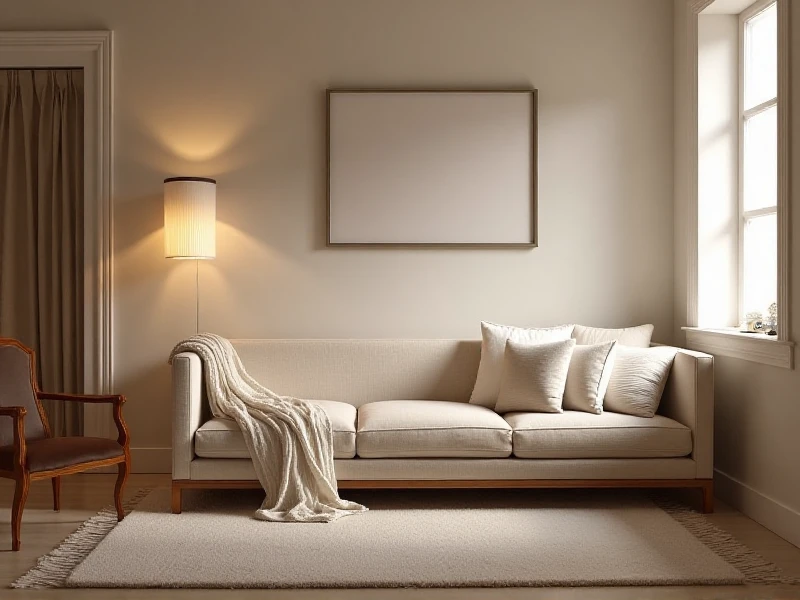Lighting Fixtures: Illuminating Your Space with Style and Function
2025-06-04

Lighting fixtures do much more than simply banish darkness; they sculpt ambiance, enhance functionality, and act as striking decorative elements. Choosing the right fixtures transforms a house into a home, a sterile office into an inspiring workspace, and a simple restaurant into an inviting culinary experience. Understanding the diverse world of lighting fixtures empowers you to make informed decisions that perfectly balance aesthetics with practical needs.
Beyond Basic Illumination: The Power of Fixtures
Gone are the days of a single central bulb. Modern lighting design embraces layered approaches, combining different fixture types to create depth and versatility. The fundamental layers include:
1. Ambient Lighting: This is the foundational layer, providing overall illumination. Think recessed ceiling lights, chandeliers, or flush mounts ensuring comfortable visibility throughout a room.
2. Task Lighting: Designed for specific activities requiring focused light. Desk lamps, under-cabinet kitchen lights, vanity lights in bathrooms, and reading lamps are prime examples.
3. Accent Lighting: The artistic layer. This highlights specific features like artwork, architectural details, or textured walls. Track lighting, wall sconces with adjustable heads, and recessed adjustable spotlights excel here.
4. Decorative Lighting: Fixtures that are statement pieces in their own right, adding personality and style. Chandeliers, sculptural floor lamps, or uniquely designed pendants often fall into this category. They work alongside the other layers.
Choosing Fixtures for Every Room
The optimal lighting fixture depends heavily on the room:
Living Room: A blend is essential. Start with ambient lighting (perhaps a statement chandelier or recessed lights), add task lighting by sofas (table lamps, floor lamps), and use accent lighting to grace shelving or artwork. Dimmer switches offer crucial mood control.
Kitchen: Bright ambient lighting is key combined with focused task lighting beneath cabinets and over the sink and countertops/island. Pendant lights over islands or tables add personality and task precision. Look for fixtures rated for damp environments if near sinks.
Bedroom: Prioritize soft, warm ambient light for relaxation (ceiling fixtures with dimmers). Bedside task lamps are essential for reading. Avoid overly bright overhead lights. Dimmable sconces flanking the bed offer a sleek, space-saving solution.
Bathroom: Requires bright, shadow-free light at the vanity (vanity lights flanking the mirror are ideal). Water-resistant ambient fixtures (recessed or flush-mount ceiling lights) are crucial for safety and overall illumination. Consider IP ratings.
Dining Room: The table is the star. A prominent chandelier or cluster of pendants provides ambient and task light while establishing the space's character. Ensure it hangs at the correct height (typically 30-36 inches above the table).
Home Office: Prioritize effective task lighting at the desk (adjustable desk lamps). Ample ambient lighting prevents eye strain, avoiding harsh contrasts with computer screens.
Hallways & Entryways: Sconces provide welcoming ambient light and architectural interest. Ceiling fixtures (flood mounts, small semi-flush mounts) ensure safe navigation. Create a statement in the entry with a beautiful pendant or chandelier.
Material Considerations for Fixtures
Materials influence both style and longevity:
Metal: The backbone of fixture construction (brass, bronze, nickel, chrome, iron). Offers durability and ranges from sleek modern to warm traditional. Look for finishes resistant to tarnishing.
Glass: Used extensively for shades and globes. Clear glass offers brighter light, frosted provides softer diffusion. Textured or colored glass adds unique decorative flair.
Fabric/Paper: Creates softer, diffused ambient light (drum shades, fabric sconce shades). Needs care to avoid dust buildup or stains.
Wood/Rattan: Adds warmth and natural texture, popular in bohemian, coastal, and Scandinavian styles. Ensure materials are properly sealed and positioned away from excessive heat sources.
Crystal: For glamour and brilliance, refracting light beautifully (traditional and modern chandeliers). Requires regular cleaning.
Technology & Sustainability: Shaping the Future
Lighting fixtures are increasingly intertwined with technology and eco-consciousness:
LED Integration: LED technology dominates. It consumes dramatically less energy than incandescent or halogen bulbs, lasts significantly longer (often 25,000 hours), and emits minimal heat, expanding fixture design possibilities. Most modern fixtures now incorporate LED modules or are designed for LED bulbs.
Smart Lighting: Fixtures integrated with or compatible with smart home systems allow voice/app control, scheduling, dimming, and color temperature adjustment, enhancing convenience and energy savings.
Energy Efficiency Standards: Regulations globally continue to push for higher efficiency luminaires (the complete lighting unit), making LED-centric designs the standard.
Sustainable Materials: Designers increasingly incorporate recycled metals, responsibly sourced wood, and biodegradable materials into fixture designs.
Key Considerations When Selecting Fixtures
To ensure satisfaction:
1. Room Size & Scale: Fixtures should be proportionate. A massive chandelier in a tiny room is overwhelming; a tiny fixture in a vast foyer disappears. Measure your space.
2. Ceiling Height: Dictates fixture type and hanging length. Low ceilings demand flush or semi-flush mounts; high ceilings allow for dramatic chandeliers and pendants.
3. Existing Decor Style: Fixtures should complement your home's aesthetic (modern, farmhouse, industrial, traditional, etc.). They act as jewelry for your rooms.
4. Light Quality & Output: Consider brightness (lumens needed for the task/space) and color temperature (warm white ~2700-3000K for cozy spaces, cool white ~4000K for task areas). Look for high CRI (Color Rendering Index) fixtures (90 ) for truer colors.
5. Functionality & Dimmers: Identify primary use. Ensure installation location has suitable wiring. Always opt for dimmers on ambient pathways for ultimate flexibility.
6. IP Rating: Critical for moisture-prone areas like bathrooms and outdoors (look for at least IP44/IP65 depending on proximity to water jets).
7. Quality & Installation: Invest in well-constructed fixtures for safety and longevity. Professional installation is often recommended, especially for complex fixtures or wiring.
Conclusion
Lighting fixtures are powerful design tools and essential functional components. By thoughtfully layering ambient, task, accent, and decorative lighting, and selecting fixtures that harmonize with space, style, and modern technology (especially LED), you create environments that are not only beautifully illuminated but also truly uplifting and efficient. Explore the vast possibilities of contemporary lighting fixtures to discover how the perfect luminaire can dramatically enhance your daily living experience.
Category:
lighting fixtures